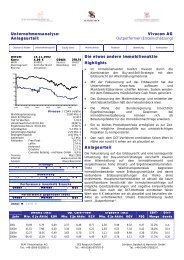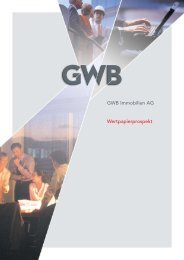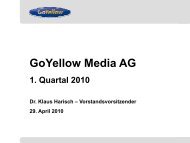Adamus Resources Limited And Controlled Entities INTERIM ...
Adamus Resources Limited And Controlled Entities INTERIM ...
Adamus Resources Limited And Controlled Entities INTERIM ...
Create successful ePaper yourself
Turn your PDF publications into a flip-book with our unique Google optimized e-Paper software.
<strong>Adamus</strong> <strong>Resources</strong> <strong>Limited</strong><br />
For the Three Months Ended 30 September 2006<br />
Notes to the Financial Statements (continued)<br />
2. Summary of Significant Accounting Policies (cont’d)<br />
(x) Investments (cont’d)<br />
After initial recognition, investments, which are classified as held for trading and available-for-sale, are measured<br />
at fair value. Gains or losses on investments held for trading are recognised in the income statement.<br />
Gains or losses on available-for-sale investments are recognised as a separate component of equity until the<br />
investment is sold, collected or otherwise disposed of, or until the investment is determined to be impaired, at<br />
which time the cumulative gain or loss previously reported in equity is included in the income statement.<br />
Non-derivative financial assets with fixed or determinable payments and fixed maturity are classified as held-tomaturity<br />
when the Group has the positive intention and ability to hold to maturity. Investments intended to be held<br />
for an undefined period are not include in this classification.<br />
Other long-term investments that are intended to be held-to-maturity, such as bonds, are subsequently measured<br />
at amortised cost using the effective interest method.<br />
Amortised cost is calculated by taking into account any discount or premium on acquisition, over the period to<br />
maturity.<br />
For investments carried at amortised cost, gains and losses are recognised in income when the investments are<br />
derecognised or impaired, as well as thorough the amortisation process.<br />
For investments that are actively traded in organised financial markets, fair value is determined by reference to<br />
Stock Exchange quoted market bid prices at the close of business on the balance sheet date.<br />
For investments where there is no quoted market price, fair value is determined by reference to the current<br />
market value of another instrument which is substantially the same or is calculated based on the expected cash<br />
flows of the underlying net asset base of the investment.<br />
Purchases and sales of financial assets that require delivery of assets within the time frame generally established<br />
by regulation or convention in the market place are recognised on the trade date i.e. the date that the Group<br />
commits to purchase the asset.<br />
(xi) Trade and other receivables<br />
Trade receivables, which generally have 30-90 day terms, are recognised and carried at original invoice amount<br />
less an allowance for any uncollectible amounts.<br />
An estimate for doubtful debts is made when collection of the full amount is no longer a probable. Bad debts are<br />
written off when identified.<br />
(xii) Cash and cash equivalents<br />
Cash and short-term deposits in the balance sheet comprise cash at bank and in hand and short-term deposits<br />
with an original maturity of three moths or less.<br />
For the purposes of the Cash Flow Statement, cash and cash equivalents consist of cash and cash equivalents<br />
as defined above, net of outstanding bank overdrafts.<br />
(xiii) Interest-bearing loans and borrowings<br />
All loans and borrowings are initially recognised at cost, being the fair value of the consideration received net of<br />
issue costs associated with the borrowing.<br />
After initial recognition, interest-bearing loans and borrowings are subsequently measured at amortised cost using<br />
the effective interest method. Amortised cost is calculated by taking into account any issue costs, and any<br />
discount or premium settlement.<br />
Gains and losses are recognised in the income statement when the liabilities are derecognised and as well as<br />
through the amortisation process.








